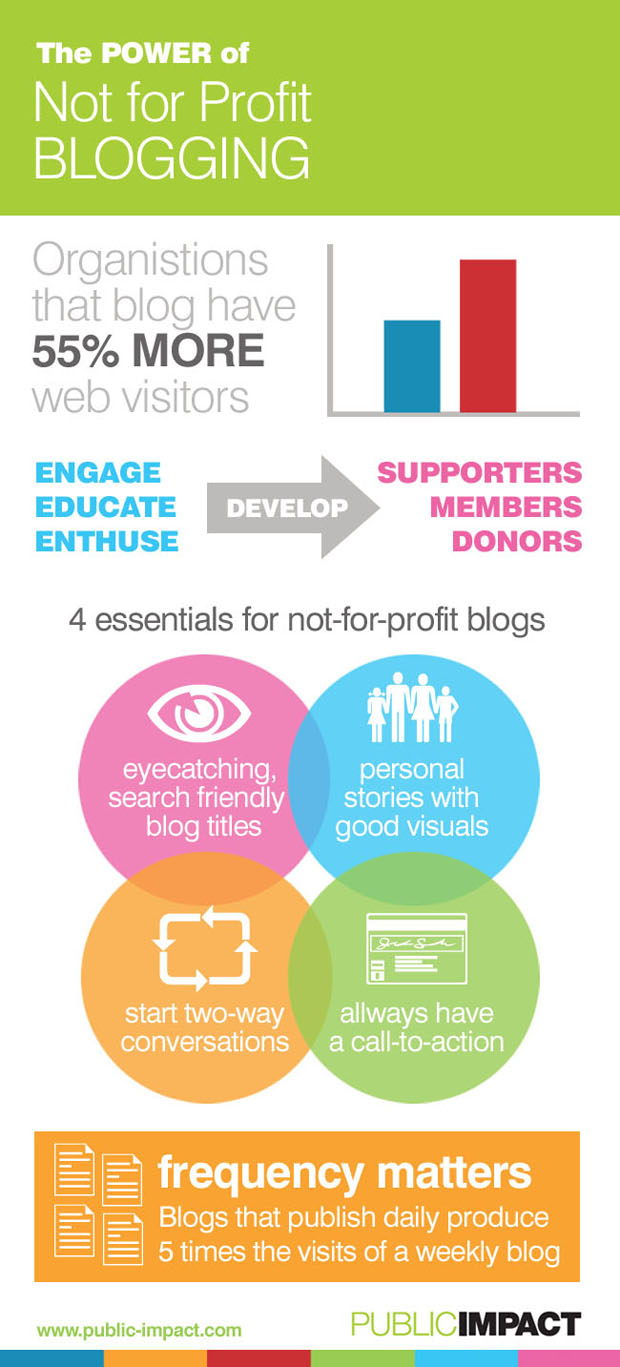Let’s start with six of the most dangerous words in the English language: ‘we’ve always done it this way’. Inbound Marketing in not-for-profit is a relatively new way of doing things. Like any new approach it requires change, but the biggest change is a change of mindset. Not-for-profit organisations, charities and NGOs can be among the most innovative advertisers and inventive marketers but just like private sector companies they can also find numerous excuses to put off change to another day.The excuses that we hear in our work, professional and personal, in the UK third sector are pretty typical reasons never to change that can be applied with a few changes to any situation. The danger is that by failing to grasp the nettle of shifting marketing efforts to the integrated digital approach know as inbound marketing good causes run the risk of having to play catch up in an unforgiving world.
1. “Our Trustees Don’t Understand Inbound Marketing”
This is probably right, they almost don’t get it as things stand. But there was a time when they didn’t get the notion of a website, or an email system or even having a computer in the office. However, it is essential for any charity, but particularly smaller charities and ‘not-for-profit SMEs’ that the Trustees learn how you can use inbound marketing to win supporters, members and donors. You also need Trustees to buy in to any move to inbound marketing. That means educating the board. Workshop approaches using external expertise can help broaden understanding and build the business case based on the excellent ROI from Inbound Marketing for not-for-profit organisations.
2. “Our target audience is older and not online”
Says who? It is a dangerous myth that needs to be dismissed. Research in both the UK and USA shows that not only are the target age groups of most charities and not-for-profits online, they are increasingly using mobile devices and talking to their friends on social networks. The perception is just plain wrong – most target audiences are reachable online. Think about who your customer really is. Look at the research, work out where they live online.
3. “Direct mail works for us – so we focus on that”
First of all postal direct mail is far more expensive than it once was. Second, it depends what you mean by ‘works’. Returns from postal direct mail appeals above 1% were considered stella in the days when direct mail was the main route to market for many NGOs and evidence suggests that not much has changed. Even a highly targeted list amounts to a scatter gun approach. Though first impressions might suggest otherwisesocial networks can offer a much more targetted approach. By contrast inbound marketing enables engagement by those who are interested in the work of your organisation. It doesn’t take a genius to work out that those with an interest are more likely to become active supporters or contributors. Take some of that direct mail budget, say half, and apply it consistently to direct marketing then assess the return on investment.
4. “Our priority is raising awareness”
And … inbound marketing in not-for-profit is an excellent method of doing just that, indeed it is central to the whole idea of inbound marketing. Your potential supporters are out there online looking for information about the cause you advocate. If they don’t find you they will find someone else. New and useful content – blogs, infographics, vlogs and trusted information pages – all helps online searchers find your information. It’s also cost effective.
5. “We are too busy to sort out our website”
Research by Public Impact has revealed that many third sector bodies have websites that are out-of-date, out-of-order or which are unable to work effectively on mobile devices. Remember those shops where the window display never changes – those ones where you don’t feel inclined to go inside until one day they aren’t there any longer? By neglecting your web presence you are neglecting the shop window of the organisation. So why doesn’t the website get priority? Often this is because the website has been seen as a cost – something that doesn’t or can’t wash its face. Inbound marketing turns your website into a machine for generating new prospects – so think about the content of your site and what your home page says about your organisation. Does it look like the sort of place you want to invest your money.
6. “We’ve had a blog and we just can’t find enough stories”
This is certainly an issue with which many people have problems. Those problems are largely questions of organisation and, once again, turning the thinking of the organisation outward. First of all there are many thousands of stories just waiting to be told in the third sector – many more so than in commercial organisations. Those stories; successes, needs, the implementation of projects, the production of positive outcomes, are inspiring and engaging. They are entirely appropriate content which most not-for-profits neglect. Content production can be learned with appropriate training or it can be bought in but think about what you have already first and how it can help tell your story.

7. “Inbound marketing is not part of our strategic plan”
Perhaps not right now, but the products of inbound marketing certainly are: new members, more donors, active supporters, improved awareness and there is a budget in the plan for developing these areas. In any case, plans are revised – as part of the plan. It they are not then they should be as a strategy, to be successful, must be a constantly evolving document. Prepare a plan for inbound marketing that meshes with your strategic plan that contributes to the goals of the plan and helps deliver those objectives.
That’s enough excuses for now – but there are more in the next blog on inbound marketing in not-for-profit!

